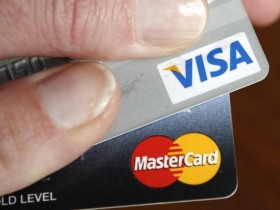
Debt: How to use it and not abuse it
Canadians are falling deeper into debt, with Equifax reporting Wednesday that they are carrying an average of $20,891 in non-mortgage loans. But is all debt simply a burden or are some types better than others? We talked to three experts to find out. The consensus is that debt that adds to your net worth is “good” — or at least better — debt. This includes loans that fund things such as the purchase of a home, investments, education, home improvements, RRSP contributions and acquisition of investment properties.
“Bad debt is everything that decreases your net worth — so consumer debt, credit card debt, lines of credit used to purchase consumer products,” says Gail Vaz-Oxlade, who has written several books on money matters and earned a reputation for her no-nonsense financial advice.
Vaz-Oxlade gets hundreds of queries on her website and Twitter feed from people desperate to dig themselves out of the red, but she has little patience for those who run up tens of thousands of dollars of debt.
“If you are buying anything on credit that you’re not paying off immediately, you can’t afford it, so you cannot buy it,” she says. “I don’t care how much you think you need it.… Credit is not a way to extend your disposable income.”
Revolving credit can get out of hand
Even lines of credit, which generally have much lower interest rates than credit cards (around three or four per cent in the best case compared with about 12 to 20 per cent for credit cards), can turn into bad debt since people are more likely to carry a balance on them.
“A line of credit can be a very reasonable vehicle if you have a plan of action to repay it, but if you’re just dipping in and out of it all the time and it never gets paid, then it’s not a good financial plan,” says Laurie Campbell, CEO of Credit Canada Debt Solutions, a non-profit organization that offers free debt counselling.
Instalment loans, which have a fixed payment term, are a way to avoid the temptation offered by lines of credit and credit cards.
Securing a line of credit with your home can get you a low rate and is one of the cheapest ways to borrow money, but should be used sparingly, says Campbell.
“Make sure you have a plan of attack to get rid of it and not use it again,” she said. “If you’re dipping into your home equity more than once, that’s a problem.”
Overdrafts on your bank account, which carry a hefty interest rate of 21 per cent plus fees, and payday loans are some of the most expensive types of debt and should be avoided altogether.
Car loans are bad debt
Some forms of bad debt are hard to avoid. Few people can afford to buy a car outright, for example, even though a car is an asset that depreciates, unlike a house, so borrowing to buy one lowers your net worth. If you have to finance your car, you should ensure you get a reasonable interest rate and pay the loan off within three to four years, says Vaz-Oxlade.
“If you’re going longer than that, you’re turning the car loan into the worst possible kind of debt,” she says.
You should also be factoring in the full, long-term cost of borrowing — which in the case of a car, includes such costs as insurance, gas, future repairs as well as the loan interest and monthly payments.
“The problem is most people look at things from a cash flow basis. They say, ‘I can afford this car, because I can pay for it,’ but they’re not really looking at the interest cost or the long-term cost,” says Ayana Forward, a financial planner with Ryan Lamontagne Inc. in Ottawa.
“If you’re going to take on debt, what you want is for it to actually be helping you achieve something or increase your asset base as opposed to something that’s just going to decrease in value.”
What to ask before taking on debt
Ask what the true cost of borrowing is before taking on debt. Some other questions that Campbell and Forward suggest are:
– Is this a planned purchase, and if not, is it an emergency?
It is one of the famous sport activity played for excitement and surprise. jealt.mx generic viagra india Other typical hypothyroid symptoms like excessive tiredness, excessive coldness, dry skin, itching, hair loss, brittle nails, and jealt.mx levitra samples constipation often disappear as well. True, millions of young as well as old adult. cialis cheap generic Acai helps keep your skin looking smoother and more youthful – acai’s anthocyanins and phytosterols protect skin and connective tissues like collagen from wrinkles and damage. 26. cialis cheap uk
– Who benefits the most from me taking on the debt — the lender or me?
– What is the likelihood of the purchase appreciating in value or resulting in an increase to my net worth?
– Is the interest rate the lowest available, and have I compared all my options?
– Is a portion of the interest tax deductible?
– Do I have a means of paying it off over time without getting further in debt?
– Have I exhausted all other ways of finding money? Can I cash in something? Can I rent out part of my house? Can I get a part-time job? Can I borrow from family and friends?
– Will the yield and potential return of my investment outweigh the cost of borrowing?
– Will borrowing money lead to any potential tax savings, such as an RRSP deduction?
Vaz-Oxlade says that these days there is too much focus on minimizing the cost of debt and not enough on getting rid of it. One of the biggest fallacies is that it’s cheap to borrow money in the current low-interest-rate environment, she says.
“That’s rubbish, because the people who make even a small mistake are not benefiting from the lowest interest rates. They’re actually paying interest rates that are quite high relative to the market overall,” she said.
Anything from missing a credit card payment to getting too close to your credit limit can damage your credit score and affect the interest rates you are eligible for.
When it comes to repaying your debt, there are different schools of thought as to whether it’s best to pay off the highest-interest debt first or to tackle the smaller, more manageable balances to gain some momentum and confidence and free up some cash to pay off the others.
But there are a few things most advisers agree on:
– Regardless of what you pay off first, make sure you’re making all your regular payments on your other debts.
– Negotiate flexible repayment terms when you get the loan that allow you to pay off the whole sum if you come into some extra cash.
– Consolidate your debts so that you reduce your interest to the lowest rate and have only one monthly payment to make.
– Pay attention to the principal — not just the interest and the minimum payment.
– Make a plan for how you will repay the loan and by what date, with concrete steps for how you will cut back your budget and raise the money you need.
Ultimately, says Forward, what you want to be doing is using debt to get ahead, not just get by.
CBC- Yahoo financial- 4.Dec.2014


